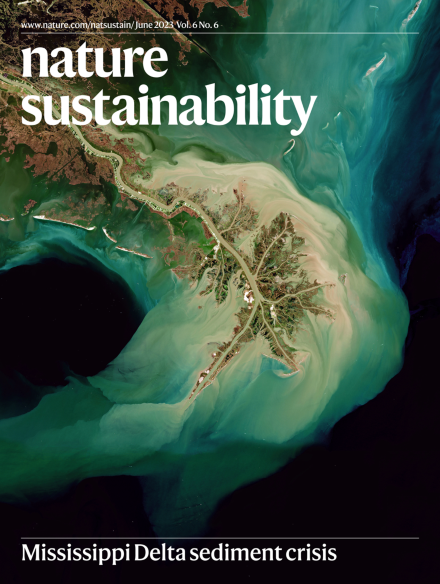The unrealized potential of agroforestry for an emissions-intensive agricultural commodity
IF 27.1
1区 环境科学与生态学
Q1 ENVIRONMENTAL SCIENCES
引用次数: 0
Abstract
Reconciling agricultural production with climate change mitigation is a formidable sustainability problem. Retaining trees in agricultural systems is one proposed solution, but the magnitude of the current and future potential benefit that trees contribute to climate change mitigation remains uncertain. Here we help to resolve these issues across a West African region that produces ~60% of the world’s cocoa, a crop contributing one of the highest carbon footprints of all foods. Using machine learning, we mapped shade-tree cover and carbon stocks across the region and found that the existing average shade-tree cover is low (~13%) and poorly aligned with climate threats. Yet, increasing shade-tree cover to a minimum of 30% could sequester an additional 307 MtCO2e, enough to offset ~167% of contemporary cocoa-related emissions in Ghana and Côte d’Ivoire—without reducing production. Our approach is transferable to other shade-grown crops and aligns with emerging carbon market and sustainability reporting frameworks. Western Africa is one of the world’s largest cocoa-producing regions, with just two countries supplying up to 60% of global production, but at a high carbon cost. Incorporating shade trees into cocoa farms offsets the industry’s carbon cost, but existing coverage is low. Expanding coverage could substantially boost carbon stocks without reducing yield.

农林业作为一种排放密集型农业商品的潜力尚未实现
协调农业生产与减缓气候变化是一个艰巨的可持续性问题。在农业系统中保留树木是一种拟议的解决方案,但树木对减缓气候变化的当前和未来潜在效益的大小仍不确定。在这里,我们帮助解决西非地区的这些问题,该地区生产了世界上60%的可可,可可是所有食物中碳足迹最高的作物之一。利用机器学习,我们绘制了整个地区的遮荫树木覆盖和碳储量,发现现有的平均遮荫树木覆盖很低(约13%),与气候威胁的关系很差。然而,在不减少产量的情况下,将遮荫树覆盖率增加到至少30%可以额外封存3.07亿吨二氧化碳当量,足以抵消加纳和Côte科特迪瓦当代可可相关排放量的约167%。我们的方法可推广到其他荫蔽作物,并与新兴的碳市场和可持续发展报告框架保持一致。西非是世界上最大的可可产区之一,仅两个国家就提供了全球60%的可可产量,但碳排放成本很高。在可可农场种植遮荫树可以抵消该行业的碳成本,但现有的覆盖率很低。扩大覆盖范围可以在不降低产量的情况下大幅增加碳储量。
本文章由计算机程序翻译,如有差异,请以英文原文为准。
求助全文
约1分钟内获得全文
求助全文
来源期刊

Nature Sustainability
Energy-Renewable Energy, Sustainability and the Environment
CiteScore
41.90
自引率
1.10%
发文量
159
期刊介绍:
Nature Sustainability aims to facilitate cross-disciplinary dialogues and bring together research fields that contribute to understanding how we organize our lives in a finite world and the impacts of our actions.
Nature Sustainability will not only publish fundamental research but also significant investigations into policies and solutions for ensuring human well-being now and in the future.Its ultimate goal is to address the greatest challenges of our time.
 求助内容:
求助内容: 应助结果提醒方式:
应助结果提醒方式:


